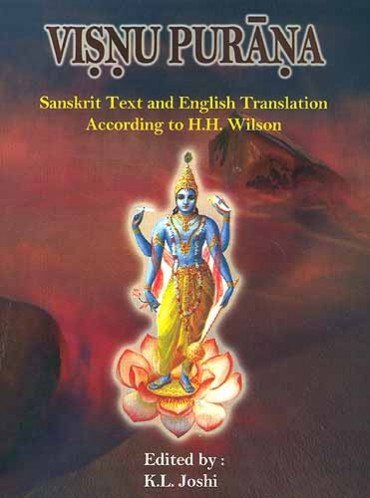The Vishnu Purana
by Horace Hayman Wilson | 1840 | 287,946 words | ISBN-10: 8171102127
The English translation of the Vishnu Purana. This is a primary sacred text of the Vaishnava branch of Hinduism. It is one of the eighteen greater Puranas, a branch of sacred Vedic literature which was first committed to writing during the first millennium of the common era. Like most of the other Puranas, this is a complete narrative from the cr...
12. The Varāha Purāṇa
12. Varāha Purāṇa. “That in which the glory of the great Varāha is predominant, as it was revealed to Earth by Viṣṇu, in connexion, wise Munis, with the Mānava Kalpa, and which contains twenty-four thousand verses, is called the Vārāha Purāṇa[1].”
It may be doubted if the Varāha Purāṇa of the present day is here intended. It is narrated by Viṣṇu as Varāha, or in the boar incarnation, to the personified Earth. Its extent, however, is not half that specified, little exceeding ten thousand stanzas. It furnishes also itself evidence of the prior currency of some other work, similarly denominated; as, in the description of Mathurā contained in it, Sumantu, a Muni, is made to observe, “The divine Varāha in former times expounded a Purāṇa, for the purpose of solving the perplexity of Earth.”
Nor can the Varāha Purāṇa be regarded as a Purāṇa agreeably to the common definition, as it contains but a few scattered and brief allusions to the creation of the world, and the reign of kings: it has no detailed genealogies either of the patriarchal or regal families, and no account of the reigns of the Manus. Like the Liṅga Purāṇa, it is a religious manual, almost wholly occupied with forms of prayer, and rules for devotional observances, addressed to Viṣṇu; interspersed with legendary illustrations, most of which are peculiar to itself, though some are taken from the common and ancient stock: many of them, rather incompatibly with the general scope of the compilation, relate to the history of Śiva and Durgā[2]. A considerable portion of the work is devoted to descriptions of various Tīrthas, places of Vaiṣṇava pilgrimage; and one of Mathurā enters into a variety of particulars relating to the shrines of that city, constituting the Mathurā Māhātmyam.
In the sectarianism of the Varāha Purāṇa there is no leaning to the particular adoration of Kṛṣṇa, nor are the Rath-yātrā and Janmāṣṭamī included amongst the observances enjoined. There are other indications of its belonging to an earlier stage of Vaiṣṇava worship, and it may perhaps be referred to the age of Rāmānuja, the early part of the twelfth century.
Footnotes and references:
[1]:

Click to view
[2]:
One of these is translated by Col. Vans Kennedy, the origin of the three Śaktis, or goddesses, Sarasvatī, Lakṣmī, and Pārvati. Ancient and Hindu Mythology, p. 209. The Tri Śakti Māhātmya occurs, as he gives it, in my copy, and is so far an indication of the identity of the Varāha Purāṇa in the different MSS.
